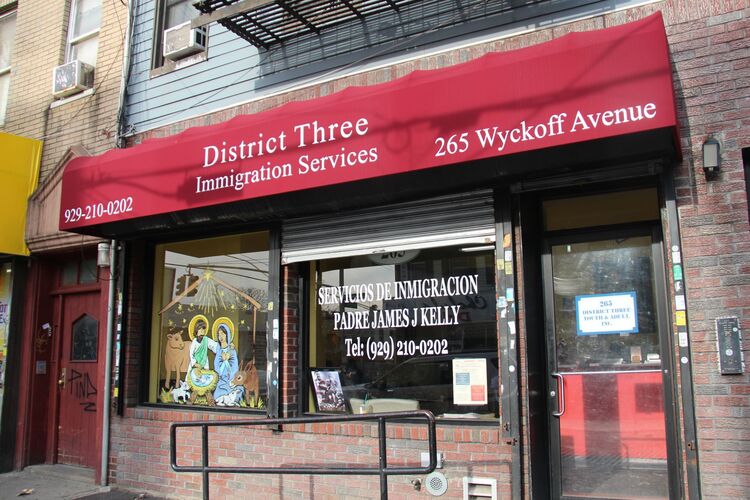Then U.S. Vice-President Joe Biden was hosted at Aras an Uachtaran by President Michael D. Higgins on June 22, 2016. SAM BOAL/ROLLING NEWS.IE
By Ciaran Reilly
In the summer of 1879, a third disastrous harvest spelled ruin for thousands of Irish farmers. Famine threatened more than a million people, principally in the west of Ireland, stoking fearful memories of “Black 47” and the Great Hunger of the 1840s. However, as in the 1840s money and aid flooded into Ireland from around the world, principally from wherever the “Famine Irish” had settled. Chief among the donors in 1879 was William Russell Grace (1832-1904). Born in Ballylinan, Co. Laois in the Irish Midlands. Grace was himself an emigrant of the Great Hunger and it was during this time that he “ran away” from home securing employment on a ship before convincing his family that South America was where their fortune lay. In 1851 Grace and his father sailed for Peru, landing in Callas, the port of the capital Lima. Although struggling at first, Grace soon realized that there was a lucrative trade in shipping and he began exporting guano, a much sought after commodity in the USA. Within a short space of time Grace & Co. controlled most of the shipping trade to New York. By the mid-1860s when he went to live permanently in New York, Grace was one of the wealthiest men in the world. Financially backing Peru in the war with Chile in 1880, Grace was handsomely rewarded in return, receiving half a million acres of land, access to mines and other natural reserves. To the Famine Irish generation in New York his charity to Ireland in 1879 was a remarkable gesture and they subsequently supported him when he ran for Mayor later that year. The campaign was successful and Grace became the first Irish person and Catholic to hold the office. His tenure as mayor was widely praised for ending the corruption and vice which had plagued politics in New York for decades, and with his brother, Michael, he established the Grace Institute, a shelter for women and emigrants, which still operates today.

Patrick Sarsfield Gilmore.
In what was a life packed with adventure and good fortune, perhaps one day in the life of William Russell Grace stands out above the rest. On the afternoon of Oct. 28, 1886 more than half a million people lined the streets of New York, from Madison Square to Manhattan for the official unveiling of the Statue of Liberty, the now iconic symbol of American freedom. As Mayor, Grace had officially received the statue on behalf of the American people and he was now present for the official unveiling by President Grover Cleveland. It had been a meteorite rise from Irish Famine emigrant who had only arrived in America less than two decades earlier. Remarkably, on that day in 1886 another Irish Famine emigrant was also present on the podium. Born in Ballygar, Co. Galway in 1829, Patrick Sarsfield Gilmore emigrated from the Famine ravaged county in 1849 settling first in Boston where he launched an illustrious musical career. A band leader, concert organizer and composer, by the 1880s, Gilmore was considered the most famous musician in the world. Indeed, such was his instant popularity, in 1860 Gilmore’s band played to both the Democratic and Republican National Conventions, with Abraham Lincoln selected as presidential candidate at the latter. With the outset of Civil War in 1861 Gilmore and his band volunteered for service with what became the 24th Massachusetts Infantry. It was during this time that his most famous song, ‘When Johnny Comes Marching Home’ was first published under the pen name ‘Louis Lambert’. His success did not end there and at the Hippodrome in New York City, which was briefly known as ‘Gilmore Gardens’, and later Madison Square Gardens, Gilmore played 150 consecutive concerts in front of crowds of 10,000 people. In total, Gilmore would play and conduct the music at the inauguration ceremony for eight U.S. presidents, the first in 1857 for President Buchanan, a mere eight years after his arrival in America.
In the same year as Gilmore left Famine-ravaged Ireland, John Gately Downey, another Irish emigrant, was making his way towards the Californian gold fields during the “great rush.” When Downey died suddenly in 1894 the tributes and obituaries lauded his meteorite rise from a “farmer’s boy to a statesman.” A millionaire by the time of his death, Downey emigrated from poverty-stricken Roscommon on the eve of the Famine. The lure of gold led him to California in 1849, but after 87 days traveling Downey decided to settle in San Francisco opening a successful drugstore. Quickly rising in the social world of San Francisco Downey entered politics and in 1860, 18 years after he had arrived in the USA he was elected theseventh governor of California at the age of thirty-two. Downey’s time in office coincided with the outbreak of the Civil War and in the first ever cross-continent telegraphic message sent from California, Governor Downey reassured President Lincoln that “I will keep California safe for the Union.” However, his time in politics was short lived and on leaving office in 1865 he embarked in a career in oil exploration. In 1873 he established the City of Downey in California.

Gov. John Gately Downey.
In the same year as Downey headed for California and Gilmore emigrated from Ireland, Patrick F. Blewitt decided to abandon plans to enter the Catholic Seminary at St Patrick’s College, Maynooth, and left Ballina, Co. Mayo, in a bid to reach America. Just like William Russell Grace, the young Mayo man decided that his future lay at sea and he enlisted for service on a cruise ship at Liverpool. However, after only eight days at sea the ship caught fire but miraculously the entire crew were saved. Sailing again the following day, Blewitt took a circuitous route and travelled via Chile, China, Japan and Hawaii before eventually reaching the USA in the early 1850s. In the meantime his parents had settled in Lackawanna, Pa., and with Colonel Scranton, Edward Blewitt mapped the emerging city. For his services Edward Blewitt was offered an area to be named “Blewittville” in his honor but he declined. Patrick Blewitt’s career as a surveyor commenced almost at once and he was responsible for mapping and apploting land and railways across a vast area of America. Later, working as a mining inspector, Blewitt was an integral figure in the development of the industry in the late 19th century, particularly in the area of fostering greater safety measures for workers. He died in 1911.

Downey's home in Los Angeles, 1888.
It seems remarkable that these four Irish Famine emigrant experiences are linked at different times in their life. Grace and Blewitt “stole away” from their families to pursue a life on the seas; Gilmore and Blewitt emigrated in the same year, 1849; Gilmore and Downey played differing roles at the Lincoln inauguration in 1861, while Grace and Gilmore shared the same stage in 1886 and in doing so remain linked to the iconic American symbol of Liberty. While it may be argued that Blewitt’s career was somewhat less successful than the other Famine emigrants were, his descendant is on the verge of creating his own history. Today, Wednesday, Jan. 20. 2021 Blewitt’s great-great grandson, Joseph R. Biden will become the 46th President of the United States.
Dr. Ciaran Reilly is an historian of 19th and 20th century Irish history based at Maynooth University. He is the author of “Strokestown & the Great Famine” “The Irish Land Agent, 1830-1860: The Case of King’s County” and “John Plunket Joly & the Great Famine in King’s County.”







